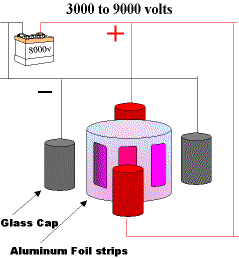

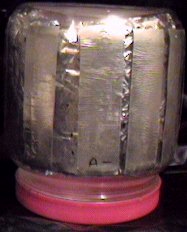 |
I used a plastic peanut butter jar for the rotor in the animated diagram above. Aluminum tapes 1" wide, 3 ¾" long are placed equally around the perimeter of the jar with a spacing of about ¼ ". The lid of the jar is mounted to a muffin fan. (Used as a smooth bearing.) A piece of aluminum foil is placed inside the jar. This amplifies the static charge. This motor turns fast while it turns the muffin fan it is connected to. This motor will generate power. Testing the current from the static generator for this unit is difficult because of abnormal static charges. Meters go crazy. |
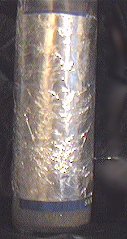 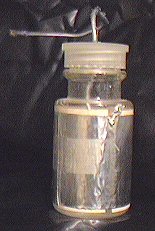 |
These are the leyden jars or static capacitors used in most of my test.
The large one is referred to as the glass cap in animated graphic above.
Static caps are easy to make. One type you use 2 pieces of aluminum foil
separated by plastic (so the 2 pieces of foil do not touch). The type I
use is a jar or candle as pictured, filled with water and aluminum foil
on the outside. The outside connects to ground.
|
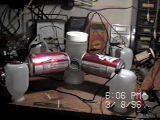 |
This was the about the fifth static motor I built. I thought the aluminum cans would store voltage better in this configuration. I was WRONG. This is a slow motor without power to do useful work. These test motors led to the motor in the animated diagram above. |
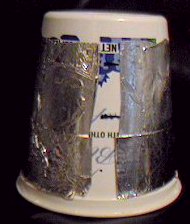 |
This is my first and favorite motor. A wide plastic container, easy
to build and modify mounted on a needle bearing. This guy was fast. Not
enough power to do anything but test. I learned about putting foil inside
the rotor using this test model. Static is easier to work with than
magnets.
|